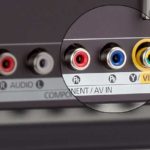What is a component input on a TV?
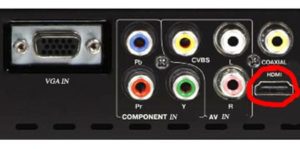 Indeed, every lover of high-quality viewing of various videos respects the whole process, and therefore strives to improve it. Therefore, you need to understand all the possible principles that lead to increased efficiency, as well as know the technologies that serve to support the presented activity. In this article we will try to understand in detail the specifics of connection and purpose of connectors on each TV.
Indeed, every lover of high-quality viewing of various videos respects the whole process, and therefore strives to improve it. Therefore, you need to understand all the possible principles that lead to increased efficiency, as well as know the technologies that serve to support the presented activity. In this article we will try to understand in detail the specifics of connection and purpose of connectors on each TV.
This is undoubtedly important, since the quality of the reproduced format will depend on it. If you do not take care of this first and are not aware of the existing opportunities that can provide each TV user with the maximum feature, you can say goodbye to receiving satisfaction from the process.
The content of the article
What is component (composite) input used for?
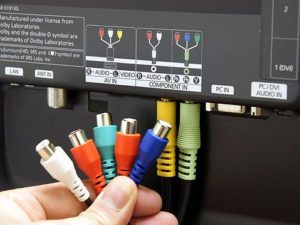 Of course, in order to fully delve into the described topic, you must first know about all the possible components of the design. The fact that the connector itself consists of three components should not be forgotten. Direct information about them:
Of course, in order to fully delve into the described topic, you must first know about all the possible components of the design. The fact that the connector itself consists of three components should not be forgotten. Direct information about them:
- The first of the elements is called one symbol, that is, Y. It is with its help that the difference between the brightness level of the provided image and synchronized pulses is transmitted.As for the hole marking, it is a circle with a yellow-green tint, which can easily be found on the panel.
- Next is Pb. It provides the opportunity for the process of distinguishing the brightness and directly the blue tint of the color gamut. Speaking about the designation, it is worth noting that it directly corresponds to the marking of the recess.
- And the last, bequeathing connector, which is marked with two letters Pr. Thanks to it, the difference between the red level and brightness is transmitted. Just like the previous object, it looks appropriate: the color exactly matches the described purpose - the use of a red appearance.
ATTENTION! In some models, you may notice that different symbols are used to mark the hole. If you are a user of exactly the described design, then, most likely, the input is indicated by one letter - U. However, apart from changing the marking, nothing else changes: neither the purpose nor the features of the device.
Simply put, the function itself serves directly to improve the quality of the records being viewed.
IMPORTANT! This input allows you to receive signals not only from DVD players, computers, phones, but also from digital satellite receivers and digital television decoders.
Consequently, the indicators will be converted into the necessary parameters that are supported by this or that invention. Usually they are conventionally divided into interlaced and progressive. The first of them is needed to interact with the total number of different broadcasting systems. The second is for standard high-definition TV devices. In addition, they can be used to connect third-party devices directly to the TV.
Thus, each owner, who knows about the advantages of the provided unit, has the opportunity not only to watch ordinary everyday programs on television channels, but also to independently organize a holiday with a full-fledged home theater.
REFERENCE! The described type of interface can be used practically with all the equipment of modern life.
Moreover, if we compare the described unit with S-video or with composite input, where multiplexing is used directly, the first of them provides higher definition (namely, up to 270 TVL).
What it looks like and where it is located
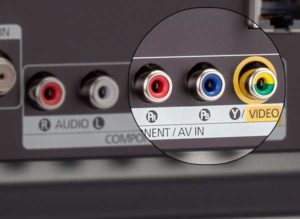 Speaking about the location of this type of entrance, it is worth noting that it is located directly in the same place as all other similar objects. This means that you can find them directly on the back of the device, on the back panel. This is the usual position of the type of hole presented, which is indicated on every existing invention. That is, there are no designs where the connectors are located on the front, since that is where the monitor or TV screen is installed.
Speaking about the location of this type of entrance, it is worth noting that it is located directly in the same place as all other similar objects. This means that you can find them directly on the back of the device, on the back panel. This is the usual position of the type of hole presented, which is indicated on every existing invention. That is, there are no designs where the connectors are located on the front, since that is where the monitor or TV screen is installed.
Accordingly, the last option is automatically excluded. Speaking of appearance, it’s worth looking at the beginning of this article, where the color differences of each component are indicated. As a reminder, we can repeat that the first is a shade of yellow, the second is blue, and the third is red. Easy to remember because the designations directly correspond to the intended purpose. That is, if one provides a difference in brightness and green tint, then the latter of them will be reflected in its appearance.
What are the component inputs?
As this topic was already touched upon earlier in the article, there are three components in the entire system. Consequently, the full names that are inherent in them:
- Two color difference inputs;
- One, which determines the brightness level in the image with synchronization pulses.
Speaking directly about video, it is worth dividing into two interfaces. One of which uses separate transmission of both brightness and chrominance signals. And the second transmits information about the primary colors in the images. Due to the fact that the transmission is carried out separately, and all the information is not mixed together, it can be observed that the video recording is received with the least digital distortion.
As for the video signal itself, it is supplied directly through a coaxial cable. In addition, it is worth noting that on its end side there are connectors, and the typology, as people say, is “tulip”. However, regardless of whether the compartments themselves are marked or not, the quality will be provided in a significantly improved version. If there are still no marks, then the resolution will be a standard extension. In the opposite situation, if there are marks, high indicators will be available.
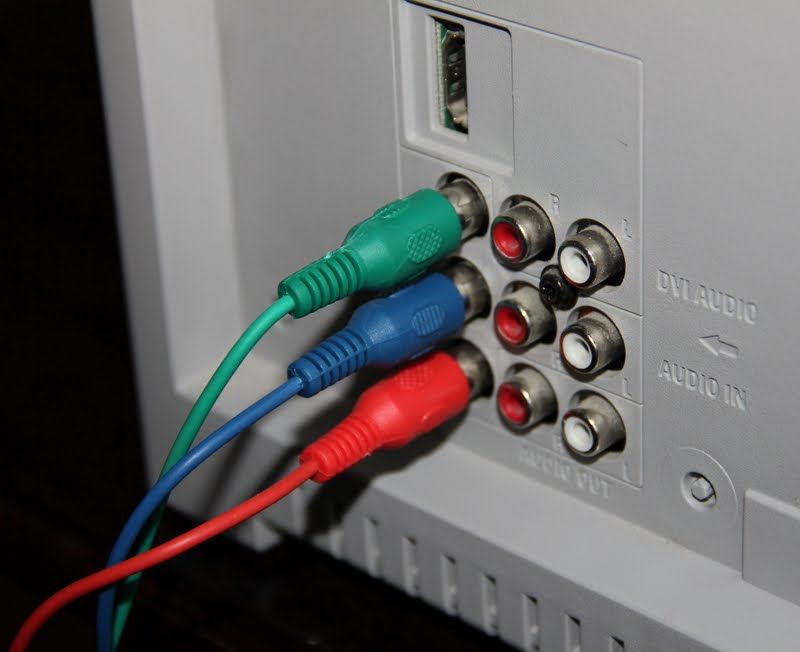 In addition, you should understand that the improvement in quality using this type of connection can only be felt on televisions, since they can have a large diagonal screen (which is approximately 29 to 36 inches, or even more). Moreover, the signal processing that occurs at the final stage is only in its treatise. It is important to remember that a component cable, like a composite cable, does not transmit audio, since it requires an additional cable.
In addition, you should understand that the improvement in quality using this type of connection can only be felt on televisions, since they can have a large diagonal screen (which is approximately 29 to 36 inches, or even more). Moreover, the signal processing that occurs at the final stage is only in its treatise. It is important to remember that a component cable, like a composite cable, does not transmit audio, since it requires an additional cable.
ATTENTION! In addition to the three described components, there are two more signals for synchronization: horizontal and frame.
Moreover, they are transmitted using four different methods:
- Elements move simultaneously along one wire.
- Separate process.
- Common wire with green channel.
- For a single component with blue and red channels.
To summarize, it is worth remembering that it is thanks to the described element that not only the quality and clarity of the image, which is played directly at the time of operation, significantly increases, but also the saturation. Also, in order to maximize the required performance, you can use appropriate units that would be additional components for the main device.
Therefore, when choosing any design, it is very important to pay attention to the presence of this input, since it is already known what benefits the user receives. Of course, its absence is not critical; each unit can also work without it, but the pixels will not be as pleasant for viewing various videos. Actually, until you check it yourself, you won’t understand how important the presented holes are. Each performs its own function, on which the overall performance of the acquired invention depends.


